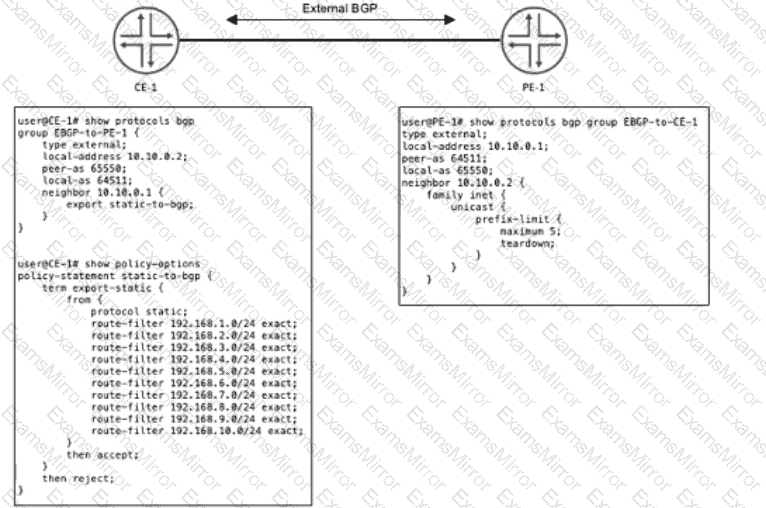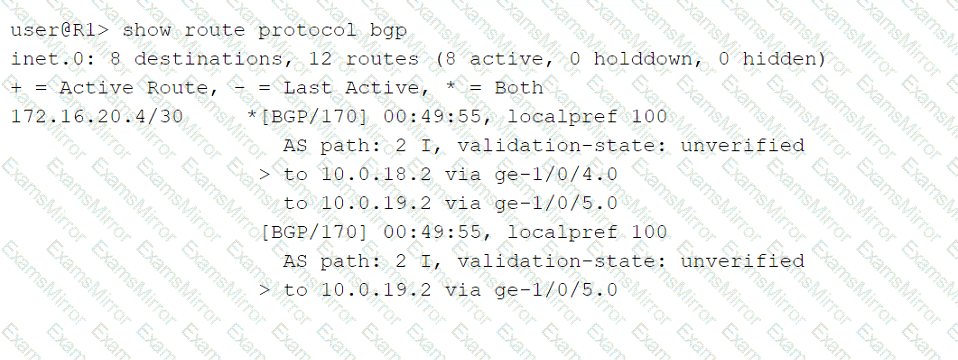Cyber Monday Special Limited Time 70% Discount Offer - Ends in 0d 00h 00m 00s - Coupon code = getmirror
Pass the Juniper JNCIP-SP JN0-664 Questions and answers with ExamsMirror
Exam JN0-664 Premium Access
View all detail and faqs for the JN0-664 exam
637 Students Passed
90% Average Score
95% Same Questions
In IS-IS, which two statements are correct about the designated intermediate system (DIS) on a multi-access network segment? (Choose two)
Which two statements are correct about a sham link? (Choose two.)
What is the correct order of packet flow through configurable components in the Junos OS CoS features?
Which two statements are correct regarding the PIM DR in a PIM-SM domain? (Choose two.)
You are responding to an RFP for a new MPLS VPN implementation. The solution must use LDP for signaling and support Layer 2 connectivity without using BGP The solution must be scalable and support multiple VPN connections over a single MPLS LSP The customer wants to maintain all routing for their Private network
In this scenario, which solution do you propose?
Exhibit

CE-1 must advertise ten subnets to PE-1 using BGP Once CE-1 starts advertising the subnets to PE-1, the BGP peering state changes to Active.
Referring to the CLI output shown in the exhibit, which statement is correct?

Click the Exhibit button.
Referring to the exhibit, which two statements are true? (Choose two.)
Exhibit

You are running a service provider network and must transport a customer's IPv6 traffic across your IPv4-based MPLS network using BGP You have already configured mpis ipv6-tunneling on your PE routers.
Which two statements are correct about the BGP configuration in this scenario? (Choose two.)
You are configuring anycast RP for load balancing and redundancy in your PIM-SM domain. You want to share active sources between RPs.
In this scenario, what are two solutions that will accomplish this task? (Choose two.)
After a recent power outage, your manager asks you to investigate ways to automatically reduce the impact caused by suboptimal routing in your OSPF and OSPFv3 network after devices reboot.
Which three configuration statements accomplish this task? (Choose three.)
TOP CODES
Top selling exam codes in the certification world, popular, in demand and updated to help you pass on the first try.
